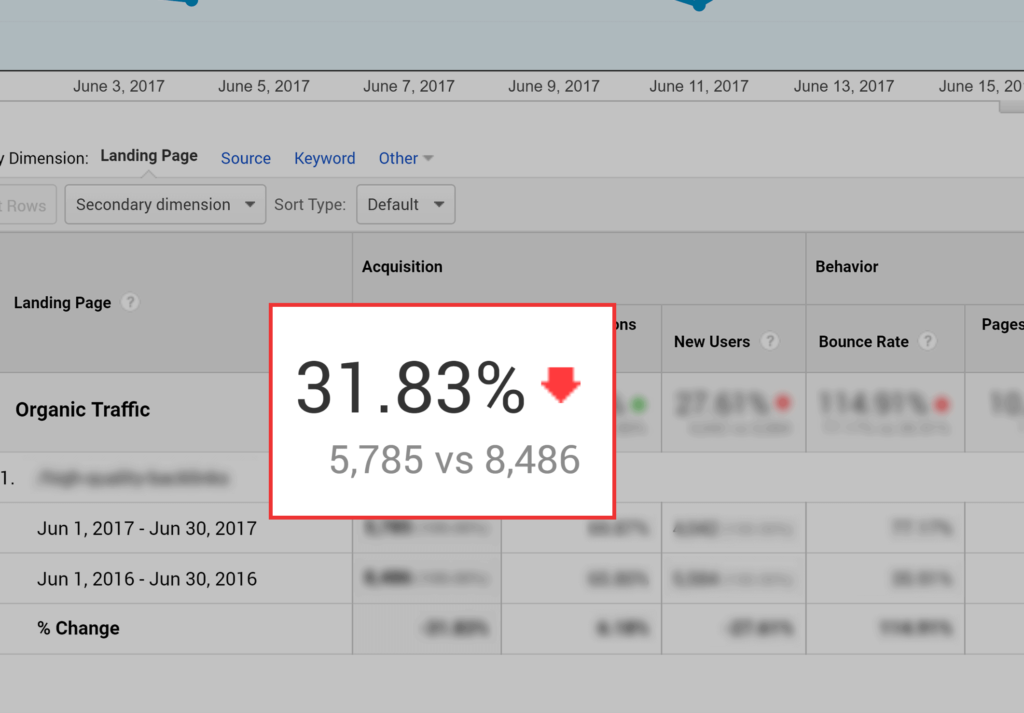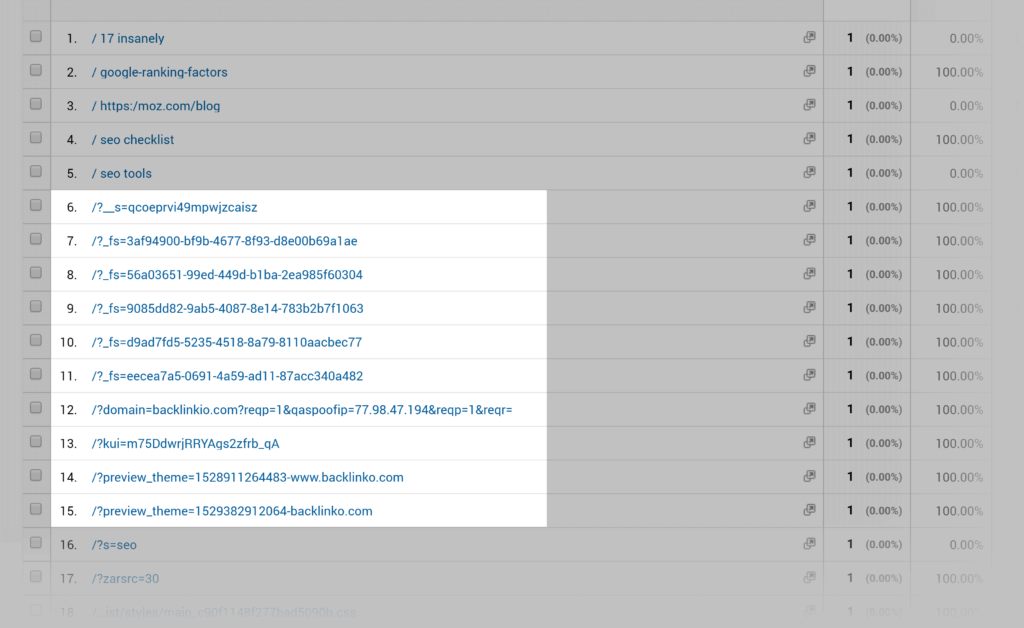
The purpose of page or website content evaluation is to find content problems, and then further improve the optimization to get a better natural ranking of search engines.
This article will explain the definition, importance and specific practice of content evaluation. I hope it will be helpful to you!
What is content assessment?
Content assessment is the process of evaluating existing content on your site and finding content that can be deleted, redirected, or improved.
Why is content assessment important?
Just like SEO site inspection, content review helps you improve content marketing in the following ways:
- Help you find underperforming content
- Improve content
- Apply lessons learned to future content
- Evaluate your top author
For example, you can evaluate content on an annual basis.
When you notice that some of the content that performed well at the time began to fade (in terms of traffic and Google rankings).

You need to start improving this content (using the best hands-on guide described below).
These tips will help you turn things around and regain more search engine traffic.
How to evaluate the content
Step 1: delete or redirect low-performance pages
Your first step is to find the donkey on your website. And get rid of them.
In other words: identify content that produces zero traffic and zero sales.
Why do we start here?
Well, if you post a lot of content on the site, you will find that there is a lot of content to filter.
But when you get rid of garbage, you can focus on content that is worth improving.
You can easily find underperforming content in Google Analytics.
Just go to “Site Content”-& gt; “Landing Pages”.

And sort the landing pages by the least number of sessions.

Now:
You may find some strange pages in this report that don’t actually exist.

But when you browse the list, you may find some content that attracted a small number of visitors last month.
Then, once you have identified this content, you can:
- Delete the content completely
- Combine it with another piece of content on your site
- Redirect page 301 to a similar page on your site
- Merge multiple pieces of content into a comprehensive article
The correct option depends on the content.
For example, if you write a blog post about events five years ago, you’d better delete it.
However, if your article is generally solid but a little thin, you may want to combine it with another part of the content.
Step 2: evaluate content based on traffic
Now that you’ve deleted, merged, or redirected the worst-performing content, it’s time to deal with the rest.
Specifically, you want to evaluate your content against objective metrics:
Traffic.
I’ve read other articles about content assessments, which make it possible to evaluate content like rocket science.
They say you should make an Excel spreadsheet based on social media share, bounce rate, comments, backlinks. And a million other factors to rate the performance of the content.
I think it’s crazy.
Of course, there are some drawbacks to just looking at one indicator.
However, if you try to evaluate the performance of content based on more than 10 different factors, you will not know how to define “good” or “bad”.
I recommend that you evaluate the performance of your content almost entirely based on the traffic it generates.
Traffic is an objective number that reflects whether a piece of content is working or not.
That is, if your content assessment focuses on SEO, then you need to look at another metric.
Step 3: view backlinks
Most of your content should be designed to bring target traffic to your site.
Then say:
You may have posted something for the sole purpose of establishing a backlink.
(in other words, link bait)
If so, you don’t want to evaluate your content based solely on the traffic it generates. You also want to see how many backlinks this content has generated for your site.
For example, the following is a research article on voice search SEO.

In terms of monthly traffic, the page is not even in the top 30.
But so far, the single item has been linked to 2200 times:

That’s why I call it victory.
Step 4: improve and republish
Once you have identified content that does not meet the standards, it is time to improve.
Yes, this is the most time-consuming part of the process. But that’s also the most important thing. If you don’t make your content better, there’s little point in conducting a content review first!
Now: there are 1 million ways to make your content better.
But here are some good ways to apply to most content types:
Add visual elements: if your content is 100% text, consider adding some visual content to the article, such as charts, charts, and infographs.
Update everything: find and replace dead links. Replace the old image. And update the content itself to reflect changes in your industry.
Make it easier to read: especially on mobile devices. In the past, most content writers paid little attention to the mobile user experience. But considering that most websites now have more mobile visitors than desktop visitors, it’s best to consider improving your content readability on smartphones and tablets.
Cover more: if your article is similar to “wait, wait, This is not exaggerating your number of words. This is to ensure that your content provides complete answers to people’s questions or questions.
With regard to the rerelease of the content, I suggest you read our previously released article: fried cold rice is also an excellent SEO tool.
Step 4: pay more attention to highly converted content
Yes, you want to evaluate your content based on almost 100% traffic.
But that doesn’t mean your content strategy should completely ignore conversion.
Why?
Because it is possible to have content that drives a lot of traffic. Almost zero potential customers and sales.
Therefore, I suggest checking which content on your site has the highest conversion rate.

And figure out how to redouble your efforts on this type of content.
There may be a specific topic that will attract buyers. Then you must want to create more about this topic.
Or maybe you have found a topic that is very suitable for traffic. But almost no one has changed. Then maybe it’s time to cut back on the topic.
You got it.
Traffic is the main goal of SEO and content marketing. But not all traffic is equal. This is why you should pay more attention to the content that brings high conversion traffic.
Step 6: record key points
After completing the content improvement, it is time to record what you have learned.
For example, you want to see which ones are valid and invalid:
- Format (for example: list articles and infographs)
- Author
- Content length
- Search engine optimization
- Social unit
- Annotation
Then apply what you have learned to future content.
For example, when I was doing content review, I noticed something:
- The case study performed well in the short term. However, with the passage of time, the traffic gradually decreases. As I dug deeper, I realized why: case studies tend to rank low in Google (compared to step-by-step guides and list articles).
- The Ultimate Guide does a good job of recommending traffic and Google rankings.
- Data-driven research is very suitable for obtaining high-quality backlinks.
- The content in my space (digital marketing) tends to grow old quickly. I need to update my stuff from time to time.
Obviously, this will be different for each site.
It is important to write down 3-5 takeout courses from your review. And share it with your team.
Useful tools
Here are some tools to help you perform site audits.
Google search console
Search Console is ideal for viewing which pages and keywords generate the most traffic for you.

(and pages that need some TLC to hit the first page)
Semush
Specifically, their site detection tools.
This tool obviously focuses on search engine optimization. But it can also help you find pages with technical problems that hinder their ranking.

